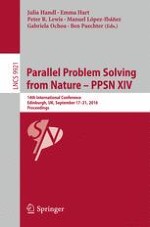This book constitutes the refereed proceedings of the 14th International Conference on Parallel Problem Solving from Nature, PPSN 2016, held in Edinburgh, UK, in September 2016.
The total of 93 revised full papers were carefully reviewed and selected from 224 submissions.
The meeting began with four workshops which offered an ideal opportunity to explore specific topics in intelligent transportation Workshop, landscape-aware heuristic search, natural computing in scheduling and timetabling, and advances in multi-modal optimization.
PPSN XIV also included sixteen free tutorials to give us all the opportunity to learn about new aspects: gray box optimization in theory; theory of evolutionary computation; graph-based and cartesian genetic programming; theory of parallel evolutionary algorithms; promoting diversity in evolutionary optimization: why and how; evolutionary multi-objective optimization; intelligent systems for smart cities; advances on multi-modal optimization; evolutionary computation in cryptography; evolutionary robotics - a practical guide to experiment with real hardware; evolutionary algorithms and hyper-heuristics; a bridge between optimization over manifolds and evolutionary computation; implementing evolutionary algorithms in the cloud; the attainment function approach to performance evaluation in EMO; runtime analysis of evolutionary algorithms: basic introduction; meta-model assisted (evolutionary) optimization.
The papers are organized in topical sections on adaption, self-adaption and parameter tuning; differential evolution and swarm intelligence; dynamic, uncertain and constrained environments; genetic programming; multi-objective, many-objective and multi-level optimization; parallel algorithms and hardware issues; real-word applications and modeling; theory; diversity and landscape analysis.
